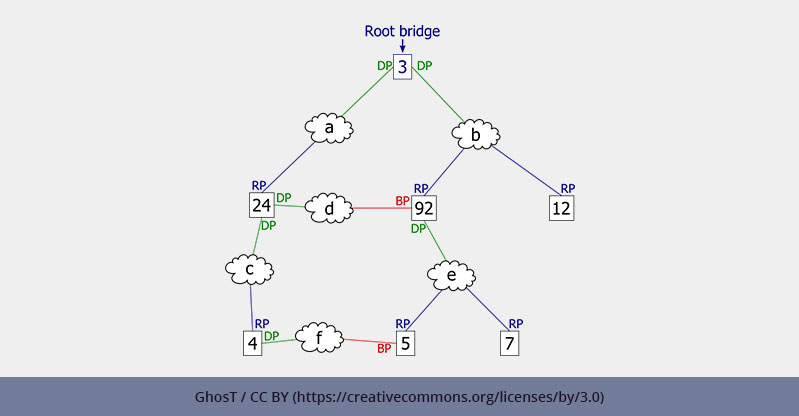In general, when we talk about great personalities in the worlds of technology, science, engineering or math, we refer to people who have already left this world, leaving us with an outstanding legacy and precious inventions and messages.
Not very often do we get to meet people who are still making a huge difference in our world, and not taking over magazine covers or being interviewed every single week by a different network. With this, we don’t want to say that geniuses like Jeff Bezos, Bill Gates, Elon Musk, or Tim Cook are not important. Instead, we would like to give the stage to someone who truly deserves it: Radia Perlman.
As she said herself, “In life, I’m always observing communication between people. So, I live figuring out the simplest way to explain something. That’s the way in which I design things. I design things for people like me… that you just plug it together and you all figure out what you need to do (…)”… and we could not agree more with her point of view. Those inventions which are truly praiseworthy, should be simple, transformative, and easy to understand.
But, who is Radia Perlman? Allow us to introduce you to her, her inventions, and her transcendental contributions to the way in which we use and understand the internet.

This is Radia Perlman: From MIT to the world!
As described in the “National Inventors Hall of Fame” information center, “Radia Perlman has played a key role in driving the growth and development of the Internet. Her best-known contribution came in 1985: the Spanning-Tree Protocol (STP), which transformed Ethernet from a technology limited to a few hundred nodes confined in a single building, into a technology that can create large networks with hundreds of thousands of nodes spread over a large area”.
She is a computer programmer and network engineer from the United States, who received her first degree from MIT. Right after that, and as many thought leaders who are modifying the internet and programming industry, she worked under Seymour Papert, at the MIT Artificial Intelligence Laboratory in the development of the LOGO programming language.
Perlman also obtained her MS and Ph.D. in computer science from MIT. Just so you know, when she started studying there, MIT only had one women’s dorm on the entire campus. Something that today is simply unthinkable.
Even though she is mainly recognized for her invention of STP, which is essential to the operation of network bridges, Radia Perlman has written 2 books, and holds over 100 issued patents. Nowadays, she works for DELL.
But, do you really know what the STP is? We’ll do our best to describe it to you in simple terms… Let’s go!
What is the STP?
The Spanning Tree Protocol is a network protocol that builds loop-free logical topology for Ethernet networks.
Just in case you don’t know, Ethernet is a family of computer networking technologies commonly used in local area networks, urban area networks, and wide area networks; A network is a group of computers that use a set of common communication protocols over digital interconnections.
STP is based on an algorithm, and that algorithm was created by Mrs. Perlman while she was working for an organization called Digital Equipment Corporation.
Now, do you know what an algorithm is? Check out how to explain this concept to your kids in this article we wrote a few weeks ago!

Women in technology!
As we have said before, one of our biggest goals is to close the gender gap in the worlds of science, technology, engineering, and math. We want to show the world that coding is an inclusive field of study, and that anyone can become an extraordinary programmer if the right tools are delivered, and if the learning process takes place in a safe, supportive, and encouraging environment.
We’ve seen many women who are crafting new paradigms in the tech world, and showing younger generations that there is no such thing as jobs for men or for women. If you want to show your boys and girls that they can both make it to the big leagues, show them a few of the following articles:
1. Here, we went over 5 phenomenal CEOs who are making a huge difference in the world of technology and STEM.
2. In this article, we debunked the horrible myth that claims that girls can’t code. Here, we show you why people who say this are terribly wrong.
3. Ida Rhodes was a wonderful woman who created phenomenal inventions within the math world. Learn more about her and use her story to inspire your little ones.
4. Reshma Saujani is advocating to close the gender gap in STEM, and she is doing an outstanding job. She is the founder of “Girls Who Code”, and you have to know her life story.
We have several articles written and published that talk about women who made, or are making, a countless contribution to our world. Here we just reminded you of 4 of them, but if you’d like to read more of them just navigate through our blog and let yourself be surprised.

Coding for your kids. The time is now!
Regardless of your children’s gender, coding is a must. Give your kids the tools they will need to succeed in tomorrow’s world. We know very little about the world of the future, technology progresses so fast, that our kids will have to deal with issues we never had to face.
In order for them to succeed in this task, and to solve problems in a creative way, by thinking critically and analytically, coding can truly help. Yes, even if they want to follow a career path that is not at all related to the STEM fields.
Check out the live, online coding courses offered by Tekkie Uni. Let your kids be part of a supportive, encouraging, and very fun learning environment. You’ll be amazed by the breathtaking things they will create in no-time.
Your kids need these tools. What are you waiting for?





